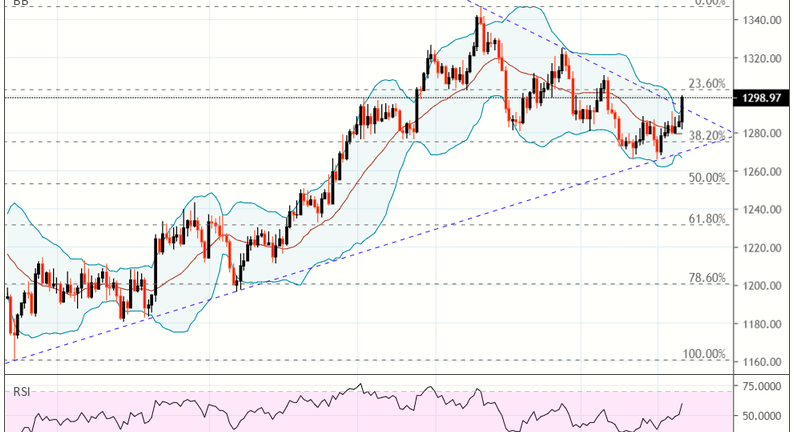Review of Historical Gold Prices
Jan 20, 2024 By Susan Kelly
Starting with the Gold Price in 1970, if one were to buy at the LBMA AM fix and sell at the LBMA PM fix, one would have a profit of... At the end of 2018, one would have USD 3.33 worth of gold (down from the original USD 35).
If, on the other hand, a trader had used the opposite strategy (i.e., selling at the LBMA AM fix and purchasing at the LBMA PM fix order this entire fiat currency era), then by the end of the year 2018 AD, they would have nearly $13,000 oz gold in US dollar value.
Gold Prices in 2018 - Daily Gold Price Fix Information

In the over-the-counter Gold Bullion markets, "Gold fix prices" are the averages of the prices at which various trading institutions and brokerages have arrived. Fx (foreign exchange) prices are the most often discussed and cited figures in the precious metals trade.
From Sunday at 6:00 PM (Eastern Time) to Friday at 5:00 PM (Central Time), the foreign exchange gold markets around the world are open for trading nonstop (Eastern Time).
The user understands and agrees that SD Bullion makes no promises about the timeliness, reliability, or completeness of the data shown here regarding prices. Neither shall it be liable to any person or organization for any losses or damages resulting from delays, inaccuracies, errors, or omissions in this price data or the viewer's receipt or use of this data. Physical precious metal bullion products are available for purchase by customers from SD Bullion for the goals of asset preservation and sensible allocation. Because we are neither financial planners nor licensed to offer investment advice, we strongly warn against making any speculative use of the information available on our website, including but not limited to the prices shown, comments made, and overall opinions offered. This article's contents are solely for instructional purposes.
How would you rate the precious metals market in 2018? Reading today's article, you can learn about the key factors that will affect gold prices in 2018. Investors can use this information to gain a deeper familiarity with the gold market and make more informed investing decisions heading into the New Year.
As a result, we view 2018 as being neutral to slightly negative for the gold market. - this is what the Market Overview for December 2017 said. The next year (my God, where has the time gone?) proved that we were correct.
Prices of gold (London P.M. Fix, in dollars) from December 2017 to December 2018

Please note that bullion prices rose sharply after the FOMC meeting in December 2017. It is even more evident that our "neutral to slightly bearish" call was correct if we compare today's gold prices to the level before the meeting (about $1,260) or just to the average of 2017 ($1257.12).
Is it significant that there has been a 3 percent decline? That's where your point of view comes into play. One could be sorely disappointed if they anticipate that gold prices can do nothing but rise. Also, it's possible to feel let down if you keep your sights on a cost of approximately $1.900 and hold out hope for a strong recovery. Compared to 2011's stellar performance and 2017's increase of over 10%, the following chart shows that gold fared poorly.
Prices of gold as measured by the London PM Fix (in US dollars) from 2013 to 2018
The preceding data, however, illustrates that a decline of 3% over the period beginning in 2013 is not out of the ordinary. 2018 was historically difficult for precious metals, and investors should keep that in mind. The Federal Reserve effectively tightened the nation's financial system by increasing interest rates four times. The US economy picked up steam while inflation stayed low.
Read on for a handy chart. Gold prices are heavily influenced by the US dollar and US real interest rates, both of which are reflected in this chart. The dollar index, which tracks the dollar value relative to a basket of other currencies, increased from 120 to 128 (6.66 percent), while 10-year Treasury note yields increased from below 0.5 percent to well above 1.0 percent (so they more than doubled).
The Fed's tightening cycle widened the gap between the United States' and other countries' monetary policies. Gold prices fell as investors moved their money into the United States because of the strengthening dollar and the declining appeal of gold.
Investors were further encouraged to reallocate their capital into dollar-denominated assets by the negative effect of increasing interest rates on emerging economies and the robust economic expansion in the United States. The adverse macroeconomic situation in 2018 meant that gold's performance was acceptable.





